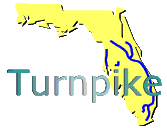| 1.0 | TRAVEL AND TRAFFIC MANAGEMENT |
| 1.7 | INCIDENT MANAGEMENT |
| 1.7.0 | ITS shall include an Incident Management (IM) function. Incident Management will identify incidents, formulate response actions, and support initiation and ongoing coordination of those response actions. Six major functions are provided which are (1) Scheduled Planned Incidents, (2) Identify Incidents, (3) Formulate response Actions, (4) Support Coordinated Implementation of Response Actions, (5) Support Initialization of Response to Actions, and (6) Predict Hazardous Conditions. |
| 1.7.1 | Incident Management shall provide an incident identification function to identify incidents. |
| 1.7.1.1 | The incident identification function shall include the capability to identify predicted incidents. |
| 1.7.1.1.1 | The incident identification function shall use information from the following types of sources, where available, to identify predicted incidents: |
| 1.7.1.1.1(a) | Traffic flow sensors. |
| 1.7.1.1.1(b) | Environmental sensors. |
| 1.7.1.1.1(c) | Public safety sources. |
| 1.7.1.1.1(d) | Media sources. |
| 1.7.1.1.1(e) | Weather information sources. |
| 1.7.1.1.1(f) | Transportation providers. |
| 1.7.1.1.1(g) | Sponsors of special events. |
| 1.7.1.1.1(h) | Hazardous condition prediction algorithms. |
| 1.7.1.1.2 | The incident identification function shall determine at least the following characteristics of each predicted incident: |
| 1.7.1.1.2(a) | Type. |
| 1.7.1.1.2(b) | Extent. |
| 1.7.1.1.2(c) | Severity. |
| 1.7.1.1.2(d) | Location. |
| 1.7.1.1.2(e) | Expected duration. |
| 1.7.1.1.3 | The incident identification function shall determine the expected traffic flow impact of each predicted incident. |
| 1.7.1.2 | The incident identification function shall include the capability to identify existing (both planned and unplanned) incidents. |
| 1.7.1.2.1 | The incident identification function shall use information from the following types of sources, where available, to identify existing incidents: |
| 1.7.1.2.1(a) | Traffic flow sensors. |
| 1.7.1.2.1(b) | Environmental sensors. |
| 1.7.1.2.1(c) | Public safety sources. |
| 1.7.1.2.1(d) | Media sources. |
| 1.7.1.2.1(e) | Weather information sources. |
| 1.7.1.2.1(f) | Transportation providers. |
| 1.7.1.2.1(g) | Travelers. |
| 1.7.1.2.2 | The incident identification function shall determine and continuously monitor at least the following characteristics of each existing incident: |
| 1.7.1.2.2(a) | Type. |
| 1.7.1.2.2(b) | Extent. |
| 1.7.1.2.2(c) | Severity. |
| 1.7.1.2.3 | The incident identification function shall determine and continuously monitor the current and expected traffic flow impact of each existing incident. |
| 1.7.2 | Incident Management shall provide a response formulation function to formulate appropriate response actions to each identified incident and revise those actions when necessary. |
| 1.7.2.1 | The response formulation function shall propose and facilitate the appropriate scheduling of those predicted incidents that can be scheduled to minimize incident potential, incident impacts, and/or the resources required for incident management. |
| 1.7.4 | Incident Management shall provide the capability to predict the time and location of hazardous conditions that may cause an incident. |
| | |




